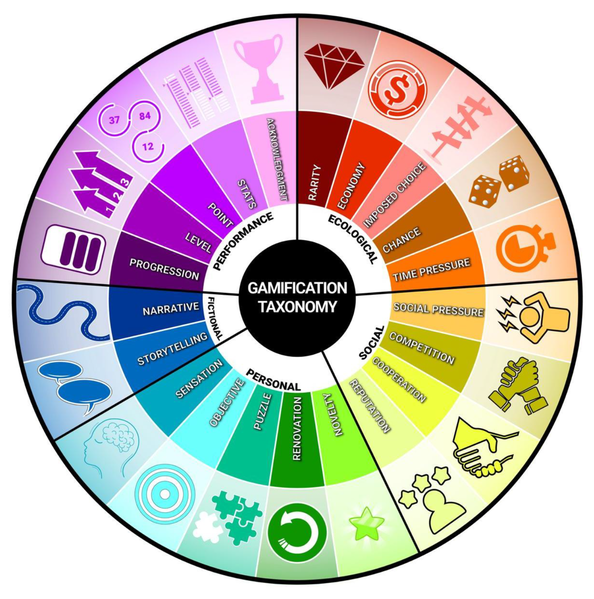Principle 1: Engaging Learning Experiences

What is an Engaging Learning Experience?
‘Engaging’ learning focuses on putting the student at the heart of the learning experience. It is about creating learning experiences that are interesting and stimulating, and which capture students’ attention.
Some of the ways this might be achieved could include:
- using a diverse range of learning activities, including those where learners can create, discuss and discover;
- helping students to understand both the short-term and long-term relevance of what they are learning;
- making creative or innovative links between new content and students’ existing knowledge.
A cornerstone of engaging learning is to ensure our activities, materials and approaches are accessible to all students. It is also an opportunity to ensure that our programmes and modules prepare students for their future study or employment.
Engaging learning experiences can arise from what is known as ‘Social Constructivist’ pedagogy, where the teacher’s primary role is to facilitate learning as an active and social process. This is achieved through the use of meaningful activities which enable students to (1) learn through engaging in dialogue with peers and colleagues, and (2) develop their own learning and understanding by undertaking practical activities, rather than by listening or reading. This is known as active learning, which focuses on students learning through doing, by contrast to passive learning, which centres on students receiving information. (See also Practical Tips to Embed Sustainability.)
Planning for curriculum design should centre on how best to ensure that the learning experience is both active and social, and should always ensure clear alignment between learning outcomes and the planned assessment methods for a module or programme.
Deeper Dive into Engaging Learning Experiences
Approaches to Creating Engaging Learning Experiences
There are a number of ways in which you might choose to use active learning to create an engaging experience for your students, including:
- Problem-Based Learning (PBL) – where students apply their knowledge and skills to address real-world or hypothetical problems
- Enquiry-Based Learning (EBL) – where students undertake research to respond to question(s), which may be set by the teacher/facilitator or identified by learners
- Experiential learning – where students are immersed in real-world settings, or contexts that replicate real-world settings, allowing them to apply and make connections between their learning and the world outside the classroom or lab. Examples could include work experience placements, field trips and site visits.
- Creative or construction-based activities, where students produce some kind of product or output to demonstrate or evidence their learning. Common examples include posters, presentations, videos or learning resources, but the list is endless!
- Collaborative learning activities, where students work together or with members of the public, professional bodies or public/private sector agencies to produce a shared output or reach a specific goal.
- Gamification and playful learning – where game-related elements are used as a strategy to engage learners and increase the perceived enjoyment of learning. While much research focuses on the use of video games, game-based approaches can also include so-called ‘low-tech’ approaches, such as board games, quizzes and puzzles.
Toda et.al (2019) use a taxonomy to illustrate the various elements of games which can be embedded into learning; these include storytelling/narrative, competition, objectives, points, rewards and leader-boards.

Case Studies of Engaging Learning Experiences
- Mock legal trials in Pharmacology (Prof Derek Lang, MEDIC)
In this activity, students take part in a mock legal trial, putting controversial drug treatments ‘in the dock’. Students are grouped into prosecution and defence teams and prepare and present their cases for trial. Student engagement and outcomes are excellent in this example of active learning, reflected in strong positive feedback such as: “I found this teaching method extremely innovative and a great fun way of integrating knowledge while learning how to interpret literature and come to a balanced conclusion based on the evidence”
Read more about the mock legal trials here.
- A co-created card game for the circular economy (Dr Marianna Marchesi, ARCHI)
This engaging learning activity uses a card game developed by Dr Marchesi in the School of Architecture, and illustrates the positive benefits of ‘gamification’. With the ‘Circular Families’ game, students and the wider public are introduced to production and consumption practices necessary for a circular economy, and have an active role in exploring the impact of cities on the environment
Read more about the Circular Families card game here.
- Peer learning and role-reversal (Dr Stephanie Slater, CARBS)
With thoughtful design, the creation of peer-learning opportunities in the curriculum can be extremely effective. In the Business School, allowing space for the exploration of students’ diverse international experiences through a ‘role reversal’ project work had a hugely positive impact on students.
Read more about the project and its positive impact on student learning here.
Overcoming Challenges to Creating Engaging Learning Experiences
How can I overcome challenges to create an engaging learning experience?
An engaging learning experience relies on the creation of a positive and inclusive learning environment and may be affected by a number of factors:
- Large student numbers
- Challenging learning spaces, e.g. lecture theatres with fixed seating
- Uncomfortable, anxious or distracted learners
- Teacher and students overwhelmed by the use of technology which they are not familiar with
- Loss of a sense of wider community if students are working in small groups
- Cultural factors which impede access to learning
In response to these challenges, Petersen and Gorman (2014) advise the following approach:
Before Your Session (during the design stage)
- Design activities that meet your learning outcomes and take advantage of the space. This may include planning for contingency activities or deciding on how you will respond to changes such as a smaller than anticipated group of learners, or an unexpected room change.
- Decide what technology you will and won’t use.
- Take an incremental approach to changes in teaching.
First Day of Your Session
- Communicate your philosophy about teacher and student roles;
- Articulate expectations for student-instructor and student-student interaction;
- Inform students that you will solicit their feedback.
During Class Sessions
- Direct student attention during sessions;
- Set aside time for large group interaction;
- Ask for student feedback early in the semester.
Ensuring that clear parameters are established during the design stage will also enable you to plan your learning and assessment activities more effectively. Also, ensure you plan for contingencies (‘what will I do if…?’), including technology failure, larger or smaller group sizes, or room changes.
References
Petersen, C.I. and Gorman, K.S. (2014) Strategies to Address Common Challenges When Teaching in an Active Learning Classroom. New Directions for Teaching and Learning, 2014, 63-70. https://doi.org/10.1002/tl.20086
Bligh, D. A (2000) What’s the Use of Lectures? San Francisco: Jossey-Bass
Share your feedback
Where Next?
Are you ready to explore some process pages?
If you're planning a new programme, or for revalidation, you might find the following pages useful in this order:
- Programme Scoping
- Programme Revalidation
- Learning Design and Preparing to Teach
- Learning Enhancement
Or perhaps, if you're already in the midst of teaching, you might find one of the following pages useful: